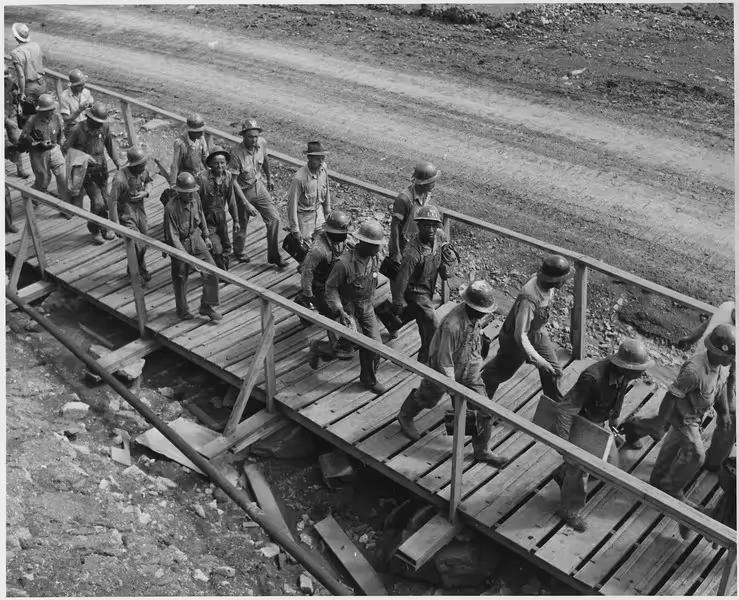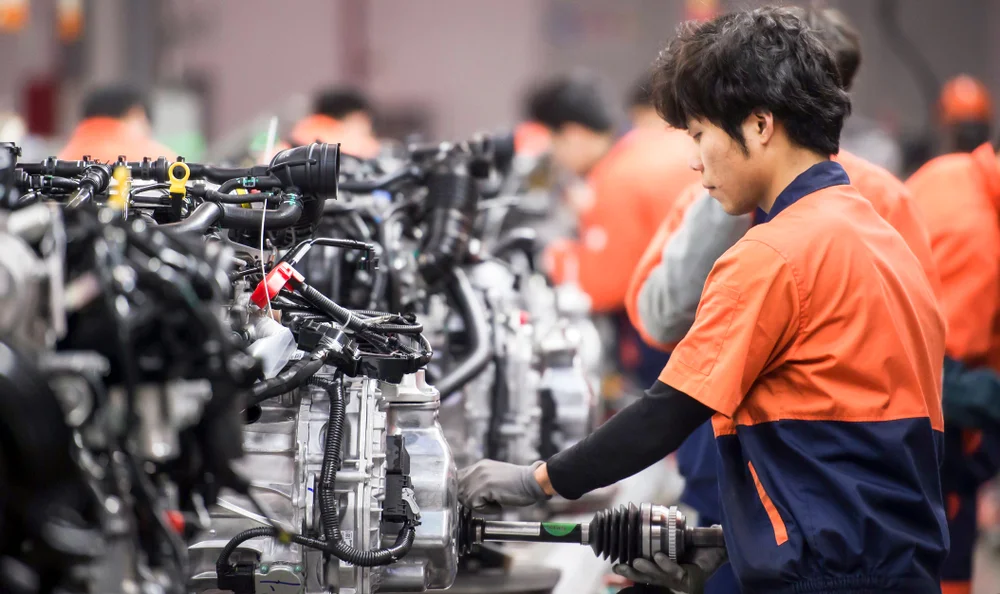
America Needs Its Hidden Champions
Small firms will not only bolster America’s new defense industrial base but also spark the manufacturing renaissance to come.
Sometimes big changes come in small packages. These changes are already happening with our enfeebled defense industrial base. They will also be key in restoring and reshoring our industrial economy.
I’m referring to the starring role of America’s small to midsize manufacturing firms, some as small as less than 100 employees, who are reshaping the industrial landscape. They are companies like Hood Technology Vision, which produce imaging payloads for Northrop Grumman, or NextNav, which provides next-generation global positioning for TRX.
Another example is Astranis, the San Francisco-based satellite company with its 450 employees, which builds small geospatial satellites for communication and defense needs. Or Simwon North America, with its press-hardened technology for Tesla car parts; or Coherent, which makes VCSEL lasers for iPhones and iPads.
They are a far cry from the legacy manufacturers who built America’s industrial might in the nineteenth and twentieth centuries. They are smaller, leaner, and cleaner — and are harnessing the most advanced technologies, including AI and 3D printing, to carve out their niches in the U.S. and global economies.
They don’t capture the attention of the media or even most politicians when they discuss restoring our defense industrial base or reshoring our manufacturing sector. That’s why business experts call these companies “hidden champions.” It’s a term German Professor Hermann Simon coined to describe a set of small to midsize companies that were world-beaters but that have largely slipped under the public’s radar. Simon’s hidden champions had to meet a very specific set of criteria, e.g. revenue below $4 billion and a global market ranking of one, two, or three, as well as a low level of public awareness, including being recognized as global leaders in their markets.
But we can expand the definition to include a much wider range of American companies that, whatever their size or number of employees or global market share, have one key characteristic: they embody the drive, energy, and vision of their original founders, which makes them artesian wells of productivity and innovation.
When Professor Simon conducted his study more than a decade ago, he ranked the United States as the second-largest home of hidden champions in the world, with 366 companies identified as such (although far fewer than Germany, with 1,307). Today, there are many more operating in our country, all aiming to build their niche in the manufacturing renaissance that’s underway in the United States.
According to the non-profit organization SCORE, approximately 98% of all US manufacturers employ fewer than 500 employees. How many of those 238,000 companies are the hidden champions who will rebuild our nation’s defense industrial base? How many more are poised to set our economic future?
No one knows. However, one might be a precision machining company housed in a 2,000-square-foot facility that manufactures parts for a wide range of applications, including medical devices and aerospace components. Another might be a small fabricator like Ability Composites, based in Loveland, Colorado, that creates specialized parts for aerospace companies like antenna enclosures (fairings) and for UAVs.
You won’t find these companies on CNBC or the Fox Business Channel. Hidden champions go largely unnoticed, because they don’t waste time on marketing or gaining public recognition. Instead, they focus on long-term success by leveraging their deep expertise, high-quality manufacturing, and close customer relationships.
Above all, these champions are important because they bring founder energy and vision, a lean and motivated workforce, and the instinct for innovation and productivity they need to compete in a sometimes cutthroat marketplace.
Companies like Astronics Corporation, based in East Aurora, New York, that do lighting and electronics integrations on military aircraft, and True Anomaly in Denver, which designs and manufactures advanced space systems, will be crucial to the future of our defense industrial base, but also to reshoring manufacturing in America.
Everyone agrees our defense industrial base needs radical changes. Prime contractors like Lockheed Martin and Boeing have dominated that base for decades and will continue to play an important role. So will rising high-tech stars like Palantir and Anduril, who are reinventing what it takes to create a defense industrial base for the twenty first century.
However, smaller manufacturing firms will be just as crucial, whether it’s producing components for today’s weapon systems or developing new technologies and materials for those of tomorrow. Their lean organizational structures, direct owner/founder involvement, and highly specialized focus enable them to move with the agility and creativity that larger companies struggle to match.
These companies, for example, were crucial to the mobilization miracle during World War Two. The narrative of that miracle is usually dominated by the big companies, like Ford, GM, and GE. But at its heart were the thousands of subcontractors and small businesses who set to work making components for the big war contractors, and who applied the lessons they had learned in the commercial market to wartime production.
Companies like Saginaw Steering Gear, which was asked in the fall of 1940 to produce 280 .30 caliber machine guns by March 1942, and wound up producing 28,728 instead; Ex-Cell-O in Detroit, which made thread-grinding machines for the millions of screws for everything from airplanes to tanks; and New Jersey’s Okonite, which made insulation for thousands of miles of electrical wiring.
In 1940, Saginaw had fewer than 1000 employees; many of World War Two’s hidden champions had fewer than that. But their contribution to the war effort ranged far above their weight class. Some, like Massa Products Corp, are still unsung global leaders in sonar and ultrasonic products for the U.S. Navy, more than eighty years after their founding.
Today, a host of similar hidden champions are utilizing advanced technologies, such as AI, robotics, and 3D printing, to produce their products as efficiently and cost-effectively as possible, and they can bring the same innovations and efficiencies to the defense sector.
To its credit, the Pentagon came to recognize the value of these companies through the Small Business Innovation Research (SBIR) and Small Business Technology Transfer (STTR) programs. But even the Pentagon knew that many more were slipping through the bureaucratic cracks.
Here are three steps the new War Department can take to harness the potential of these hidden champions.
First, incentivize the creation of networks of cooperation across manufacturing sectors, such as those specifically geared toward producing weapons system components and subassemblies. This can also be a powerful way to attract elusive venture capital dollars, if the Pentagon prioritizes the commercial possibilities of these components as a springboard to meeting its own requirements along the way.
Second, support the development of physical facilities, which will bring smaller companies together in horizontal integration hubs. Hubs like El Segundo, CA allow companies like Varda Space, Millennium Space Systems, and Radiant Nuclear to learn from and spark off each other. Other companies are busy building and leasing out facilities that can achieve the same possibilities of synergy, which can spawn flywheels for innovation and the formation of regional supply chains.
Third, tackle the chronic workforce problem our manufacturing base faces through apprenticeship programs explicitly geared towards hidden champions. A 2022 Third Way study found that barely 0.3 percent of working-age Americans were enrolled in registered apprenticeship programs. That number is five times higher in Canada, seven times higher in Germany, and twelve times higher in Switzerland.
Instead of focusing the effort on building apprenticeship programs for large companies, it’s time to encourage the growth of similar programs for small and mid-sized firms. These companies have a history of developing highly skilled and dedicated employees who appreciate the opportunity to be more directly involved in the running of the enterprise than they would be working for an industry titan. As such, these apprenticeships can foster talent, creating the most direct value.
Finally, far from replacing the big players, these hubs of hidden champions will spawn opportunities to reshore key components for companies like Boeing and Lockheed Martin, and for newer entrants like Anduril and Palantir. Again, building and encouraging networks of cross-industry and cross-border cooperation will open opportunities for everyone, large and small: opportunities not just to win market share but to make the country safer and the economy stronger.
Hidden champions played a crucial role in achieving victory in World War Two. Now, they can be just as valuable in making America’s new defense industrial base ready for our new global security environment, but also in fostering the manufacturing renaissance to come.
Arthur Herman is a Senior Research Fellow at the Civitas Institute, and author of Freedom’s Forge: How American Business Produced Victory in World War II.
Economic Dynamism

The Causal Effect of News on Inflation Expectations
This paper studies the response of household inflation expectations to television news coverage of inflation.
.avif)
The Rise of Inflation Targeting
This paper discusses the interactions between politics and economic ideas leading to the adoption of inflation targeting in the United States.

Ignore 'Open Letters' From Economists
Don’t be swayed by “open” letters signed by well-known and well-respected scholars, experts, professors, and businessmen.

Demystifying the New Deal
Carola Binder reviews False Dawn: The New Deal and the Promise of Recovery, 1933–1947 by George Selgin

Texas Stands on Commerce
Clear limits on shareholder resolutions have made Texas a model of business certainty — and business is flooding in.

The Truth about Chinese Manufacturing
China will remain a major player in global manufacturing, but size and strength are not synonymous.






.jpg)



.avif)




